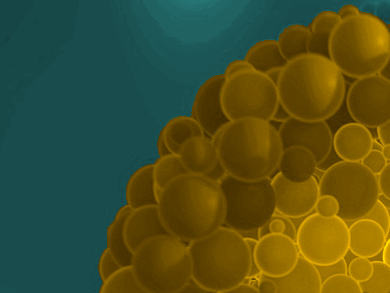Gold nanoparticles (AuNPs) with chiral ligands could be particularly well suited for applications in optics and asymmetric catalysis. N-heterocyclic carbenes (NHCs) stabilize AuNPs well, but there are few examples of nanoparticles with chiral NHC ligands.
Jia Min Chin, University of Hull, UK, Michael R. Reithofer, University of Hull and University of Vienna, Austria, and colleagues have used L– and D-histidine to prepare chiral NHC ligands. The ligands were then used to stabilize optically active gold nanoparticles.
The team methylated both the L and D forms of Boc-His-OH, i.e., histidine with a tert-butyloxycarbonyl protecting group. The modified amino acid was then subjected to a transmetallation procedure with Ag2O and Au(SMe2)Cl to give the corresponding NHC–gold complex. The complex was reduced using tBuNH2•BH3 to synthesize the AuNPs.
The prepared nanoparticles were centrifuged for size separation to give monodisperse AuNPs. Circular dichroism (CD) spectroscopy of both the D– and L-substituted variants shows optical activity. The molecular NHC–gold complex does not have significant optical activity, which indicates that the concentration of the ligands on the surface of the nanoparticles is important for the observed chiral effects. The AuNPs are stable in aprotic organic solvents for over 48 hours and could be useful for, e.g., chiral sensing or optoelectronics.
- Optically active histidin-2-ylidene stabilised gold nanoparticles,
Adam Young, Christopher Serpell, Jia Min Chin, Michael Reithofer,
Chem. Commun. 2017.
DOI: 10.1039/c7cc07602a



![Synthesis of [c2]Daisy Chains via Mechanochemistry](https://www.chemistryviews.org/wp-content/uploads/2025/04/202504_RotaxanesWithSolidStateMechanochemistry-125x94.png)
